Mehdi Hassan
A Survey of the Self Supervised Learning Mechanisms for Vision Transformers
Aug 30, 2024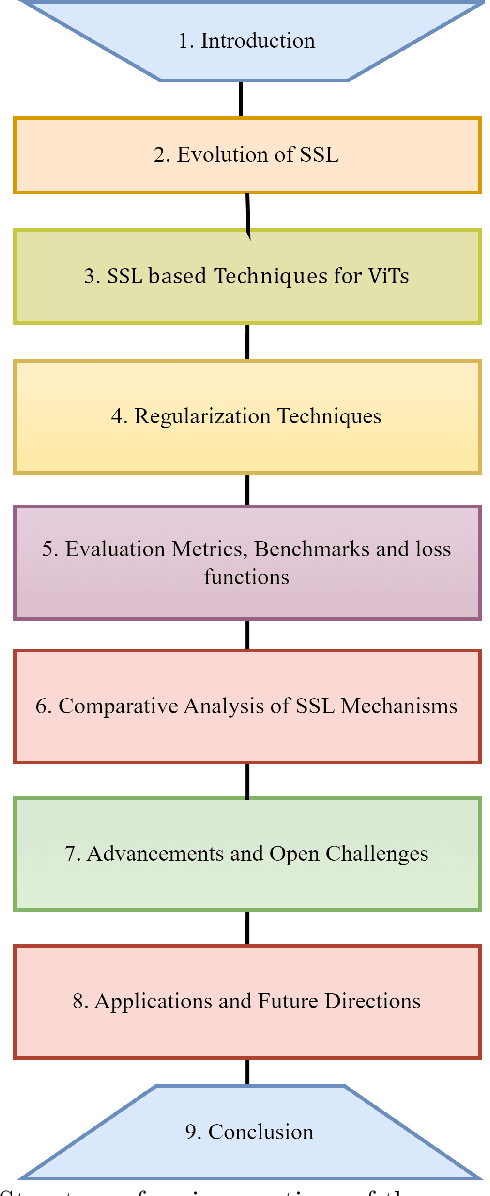
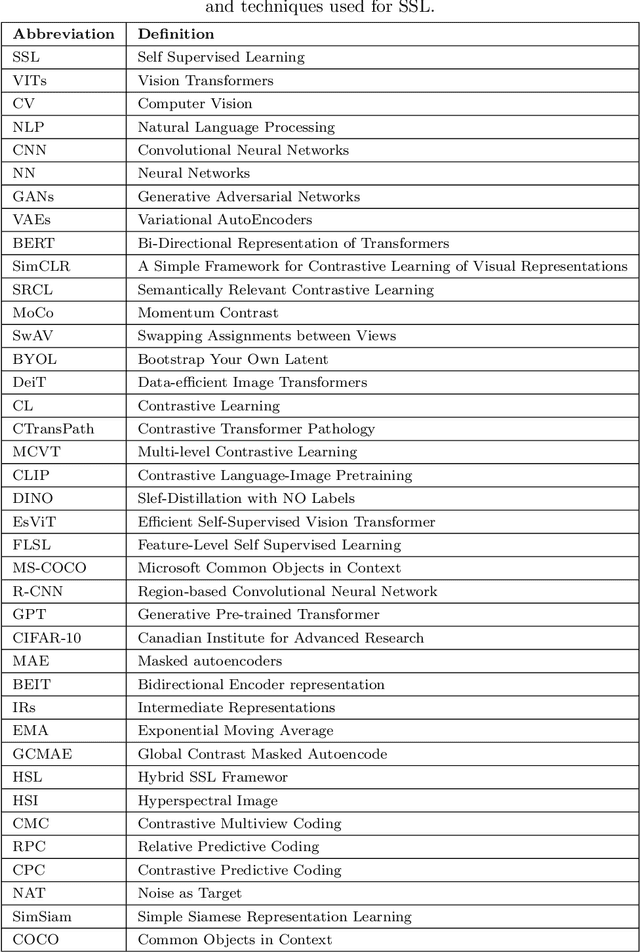
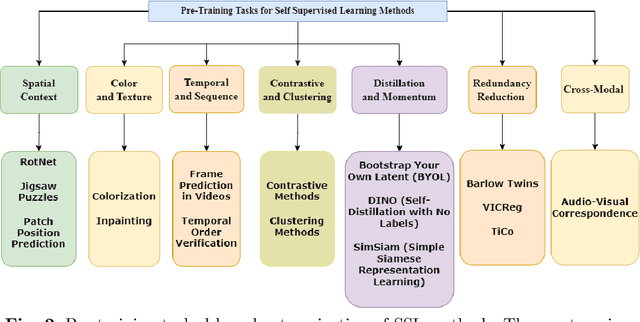
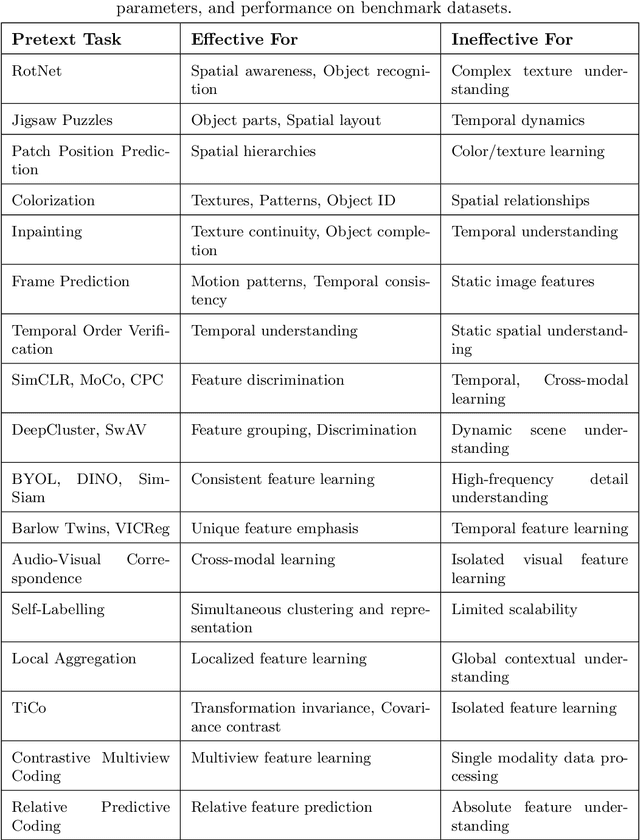
Abstract:Deep supervised learning models require high volume of labeled data to attain sufficiently good results. Although, the practice of gathering and annotating such big data is costly and laborious. Recently, the application of self supervised learning (SSL) in vision tasks has gained significant attention. The intuition behind SSL is to exploit the synchronous relationships within the data as a form of self-supervision, which can be versatile. In the current big data era, most of the data is unlabeled, and the success of SSL thus relies in finding ways to improve this vast amount of unlabeled data available. Thus its better for deep learning algorithms to reduce reliance on human supervision and instead focus on self-supervision based on the inherent relationships within the data. With the advent of ViTs, which have achieved remarkable results in computer vision, it is crucial to explore and understand the various SSL mechanisms employed for training these models specifically in scenarios where there is less label data available. In this survey we thus develop a comprehensive taxonomy of systematically classifying the SSL techniques based upon their representations and pre-training tasks being applied. Additionally, we discuss the motivations behind SSL, review popular pre-training tasks, and highlight the challenges and advancements in this field. Furthermore, we present a comparative analysis of different SSL methods, evaluate their strengths and limitations, and identify potential avenues for future research.
Segmentation of Shoulder Muscle MRI Using a New Region and Edge based Deep Auto-Encoder
Aug 26, 2021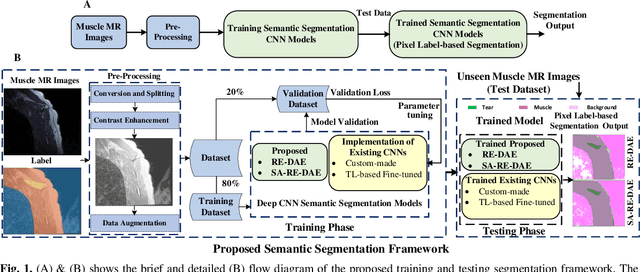

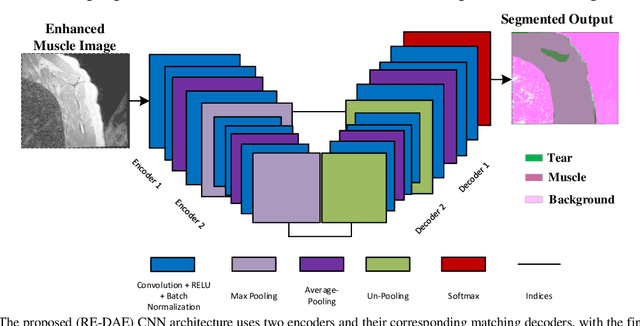

Abstract:Automatic segmentation of shoulder muscle MRI is challenging due to the high variation in muscle size, shape, texture, and spatial position of tears. Manual segmentation of tear and muscle portion is hard, time-consuming, and subjective to pathological expertise. This work proposes a new Region and Edge-based Deep Auto-Encoder (RE-DAE) for shoulder muscle MRI segmentation. The proposed RE-DAE harmoniously employs average and max-pooling operation in the encoder and decoder blocks of the Convolutional Neural Network (CNN). Region-based segmentation incorporated in the Deep Auto-Encoder (DAE) encourages the network to extract smooth and homogenous regions. In contrast, edge-based segmentation tries to learn the boundary and anatomical information. These two concepts, systematically combined in a DAE, generate a discriminative and sparse hybrid feature space (exploiting both region homogeneity and boundaries). Moreover, the concept of static attention is exploited in the proposed RE-DAE that helps in effectively learning the tear region. The performances of the proposed MRI segmentation based DAE architectures have been tested using a 3D MRI shoulder muscle dataset using the hold-out cross-validation technique. The MRI data has been collected from the Korea University Anam Hospital, Seoul, South Korea. Experimental comparisons have been conducted by employing innovative custom-made and existing pre-trained CNN architectures both using transfer learning and fine-tuning. Objective evaluation on the muscle datasets using the proposed SA-RE-DAE showed a dice similarity of 85.58% and 87.07%, an accuracy of 81.57% and 95.58% for tear and muscle regions, respectively. The high visual quality and the objective result suggest that the proposed SA-RE-DAE is able to correctly segment tear and muscle regions in shoulder muscle MRI for better clinical decisions.
 Add to Chrome
Add to Chrome Add to Firefox
Add to Firefox Add to Edge
Add to Edge